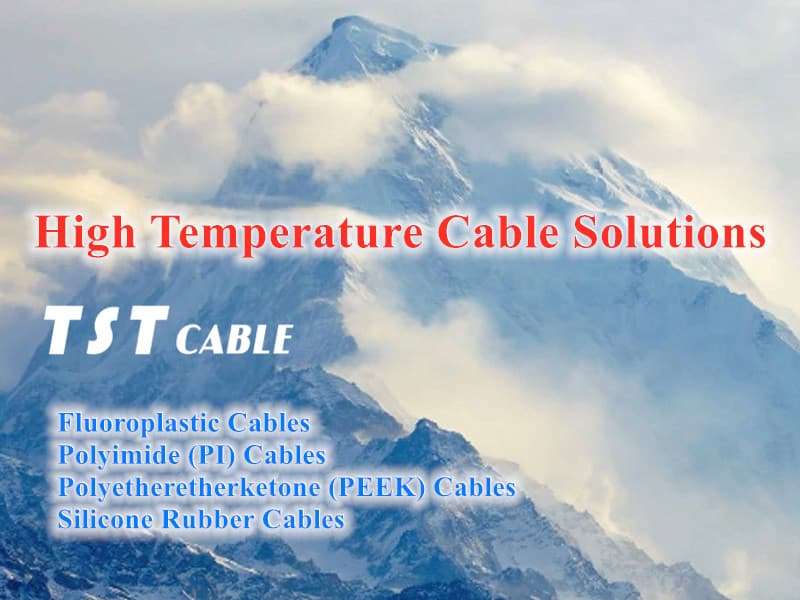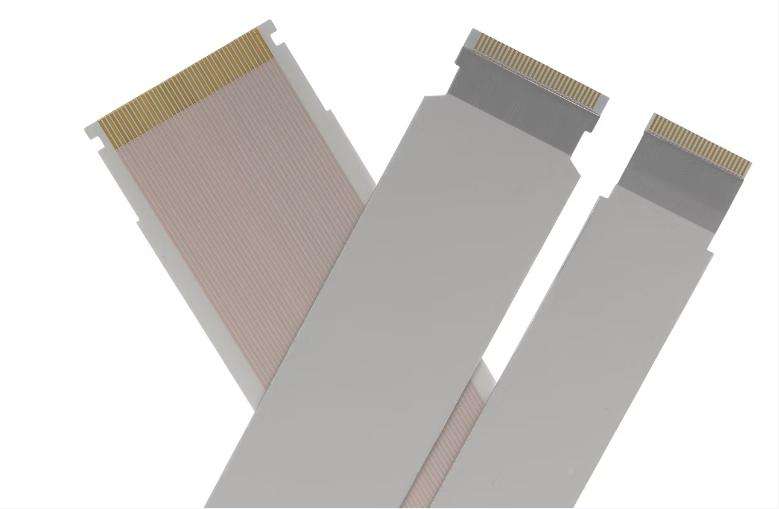
Silicone cable is made of silicone material processed wire, the conductor is tinned copper wire material, the insulator is silicone rubber, braided layer is glass fiber and silicone resin. Silicone wire working temperature in 60-200 degrees or so, AC rated voltage of 300/500V, commonly used colors include red, yellow, blue, white, black and yellow-green and so on, can be used in a humid environment for a long time.
First, silicone cable failure of the 3 common inspection methods
The inspection of silicone cable faults generally goes through three steps: diagnosis, ranging and spotting. Cable fault test is generally divided into two processes: that is, the fault cable fault point interval test; fault point fixed point test. Fault cable fault point interval test that ranging method has three kinds: circuit bridge balance method; low-voltage pulse reflection method; flashover method.
Low-voltage pulse reflection method. Low-voltage pulse reflection method of cable fault exploration by the instrument pulse generator sends out a pulse wave, through the lead to the fault phase of the pulse wave sent to the cable, the pulse wave conveyed along the core of the cable, when the transmission to the fault point, because of the fault point of the cable resistance to change, and thus there is a pulse signal is reflected back, with an oscilloscope in the test end of the record from the sending pulse and the reflection of the pulse between the time interval, you can Calculate the interval between the test end and the fault point.
Loop bridge balance method is the use of DC bridges on the cable fault ranging method, referred to as the bridge method, the field personnel have Rf <100kΩ faults known as low-resistance fault habit, mainly because the traditional bridge method can measure such faults. Bridge method for short interval cable fault ranging, the accuracy is appropriately high, therefore, it is still in use. Based on the cable is uniform along the cable, the cable length and cable core resistance is proportional to the cable, and according to the principle of the Whisden bridge, the cable short-circuit grounding, fault point on both sides of the loop resistance introduced into the DC bridge, measuring the ratio. From the measured ratio and the full length of the cable, you can get the distance from the measuring end to the fault point.
The use of bridge method of single-phase ground fault cable ranging principle is the first at the other end of the cable, the fault phase of the cable and the normal phase of the cable conductor with the cable cross-section not smaller than the cable cross-section of the wire. Then at one end of the fault phase of the cable conductor connected to the other end of the bridge on the son. The use of the bridge method of silicone rubber wire two-phase short-circuit or two-phase short-circuit and grounding, fault ranging, the need for a non-faulty conductor and fault conductor together to form a ring, when the bridge is balanced can be obtained when the interval between the point of failure.
Flashover method. The basic principle of the flashover method is similar to the low-voltage pulse method, is the use of electric waves conveyed in the cable at the point of failure to produce the principle of reflection, write down the electric waves in the fault cable test end of the fault between the point of round-trip moments, and then according to the speed of the wave to account for the location of the cable fault point. According to statistics, high resistance and flashover faults account for about 90% of the total number of cable faults. High resistance faults to impact flashover method, and flashover faults available DC flashover method test. The actual scene is through the experimental approach to distinguish between high resistance and flashover faults.
Second, the silicone cable maintenance skills:
Regular inspection of silicone cable
Regularly inspect the appearance and connecting parts of silicone cables to check for problems such as damage, cracks, abrasion, or exposed wires, and to ensure that the outer sheath of the cable is intact.
Record each maintenance and inspection, including the date, maintenance content and results, in order to track the cable’s maintenance history and identify potential problems in a timely manner.
Silicone Cable Cleaning and Maintenance
Regularly clean the cable to remove dust and dirt buildup. Use a clean, soft cloth to gently wipe the surface of the outer sheath, avoiding the use of chemical solvents or acidic cleaners to prevent damage to the insulation.
Silicone cable repair steps
If you find that the silicone cable is damaged or broken, you can take the following steps to repair it:
Check the damage of the silicone cable. If only the outer skin is broken and the wire core is not damaged, it can be wrapped and glued with tape or heat shrink tubing. If the core is also damaged, the line will need to be re-soldered.
Remove the broken part. Use scissors or knives to remove the broken part of the silicone wire, usually the length of the removal is about one centimeter to ensure the strength of the joint.
Strip the wire core and clean it. Use wire cutters or other tools to strip the insulation of the silicone wire to expose the core, and make sure not to cut the core. Then use an electronic cleaner to clean the line.
Precautions for the safe use of silicone cables
- Avoid mechanical stress: Avoid excessive bending, stretching or squeezing of wire and cable during installation and use to prevent rupture of the outer sheath or damage to the conductor.
- Prevent overloading: Ensure that the rated current of the wire and cable does not exceed its tolerance range; overloading may cause the cable to overheat, damage the insulation and increase the risk of fire.
- Waterproof protection: For wires and cables that need to be used in wet environments, waterproofing measures can be taken, such as using waterproof connectors or wrapping insulating tape.
- Pay attention to temperature limitations: Although silicone wire and cable usually has high temperature resistance, it is still necessary to pay attention to its temperature limitations to ensure that the cable is not exposed to high temperatures that exceed its temperature resistance range.
- Avoid chemical erosion: Silicone wire and cable is sensitive to some chemicals, and you should avoid exposing the cable to acids, alkalis, solvents and other chemicals to prevent damage to the insulation.
By following the above maintenance tips and precautions, you can effectively extend the service life of silicone wire and cable to ensure its normal operation and safety performance.
Third, the difference between silicone cable and rubber cable:
Material composition:
Silicone cable: made of silicone rubber as insulation, which is a material made of polymers such as silicone.
Rubber cable: usually made of materials such as vinyl or styrene butadiene rubber.
Temperature resistance:
Silicone cables: have high temperature resistance and can work stably at temperatures up to 200°C while maintaining good electrical conductivity and insulation.
Rubber cable: although also has a certain degree of high temperature resistance, but its temperature resistance range is usually not as wide as the silicone cable.
Insulation performance:
Silicone cables: excellent electrical properties, including low dielectric constant, low dielectric loss, and high insulation resistance.
Rubber cables: good insulating properties, but may be slightly inferior compared to silicone cables.
Elasticity and aging resistance:
Silicone cables: better in elasticity and aging resistance, able to maintain stable performance in a variety of environments.
Rubber cables: may not be as resilient and resistant to aging as silicone cables.
Cost:
Silicone cables: their cost is usually higher due to the use of high-performance silicone rubber materials.
Rubber cables: relatively low cost and more suitable for general industrial equipment and household appliances that require transmission of electrical energy.
Application Areas:
Silicone cables: widely used in the electric power industry, electronics industry, communications industry, industrial field and aerospace field, etc., especially in the high temperature, harsh environments can play its advantages.
Rubber cables: commonly used in household appliances, industrial equipment and transportation and other fields, especially in the need for wear-resistant, oil-resistant, corrosion-resistant occasions.
TST CABLES silicone cable, the first choice for high quality cables! Made of high-quality silicone rubber material, it has excellent high temperature resistance, and can maintain stable work even in extreme high temperature environments. Its excellent insulating properties and strong elasticity ensure safe and reliable power transmission. Silicone cables also have excellent aging resistance and longer service life. Whether in the power industry, the electronics industry or in high-tech fields such as aerospace, TST CABLES silicone cables are your indispensable partner. Choose TST CABLES silicone cables to provide your equipment with a constant stream of stable power support and security!
TST CABLES–Specializing in high temperature resistant cable applications and solutions
Fluoroplastic Cables|Polyimide (PI) Cables|Polyetheretherketone (PEEK) Cables|Silicone Rubber Cables
Rail way | Aviation | Marine | Nuclear | Oil & Gas | Wind Power industry applications
For more information on low-smoke, halogen-free, flame-retardant, high-temperature-resistant cables or to customize cables for your machinery or system, visit https://www.tstcables.com/contact-us/
or send an e-mail to:lixiangchao@testeck.com.
Also available in:
English





